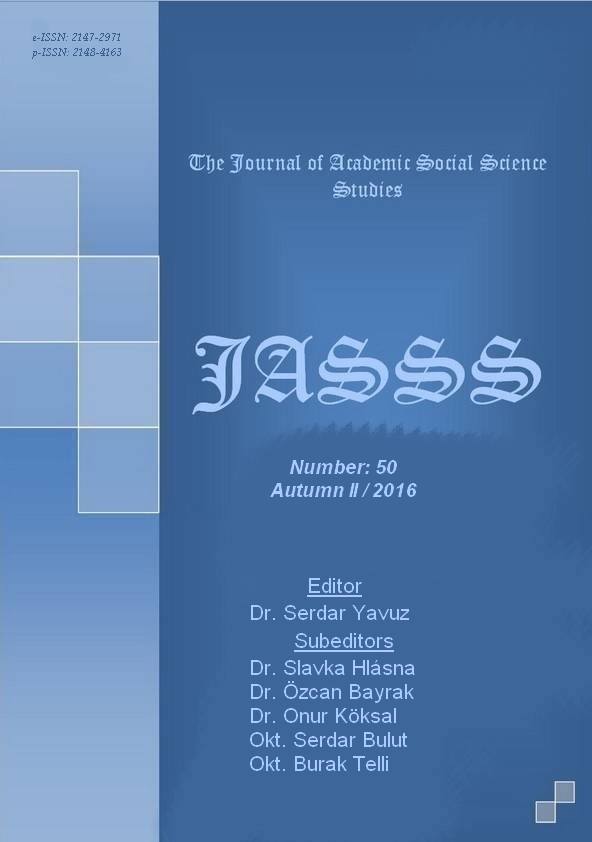Author :
Abstract
Çeviribilim birçok bilim dalı ile özellikle de dilbilim ve edebiyat ile organik yakınlıktadır. Çeviri etkinliği, gelişim sürecinde bilhassa bu bilim dallarından beslenerek kendi bağımsız sürecini oluşturmuştur. Bu süreçte söz konusu alanlardaki bazı kavramları da kendisi için bağımsız bilim olma yolunda araç tayin etmiştir. Bu noktada çeviri etkinliği, dilbilim ile edebiyatı tek paydada bir araya getiren bilim dalı olma özelliği de taşımaktadır. Çeviribilim, dilbilim ve edebiyatın bazı ögelerini kendi kuramsal dairesi içerisine alarak ve onların başka bir dile aktarılma sürecini, sonucunu ve tanımlamasını yaparak kendi oluşumunu sağlamıştır. Bu bağlamda atasözleri ve deyim çevirileri özel bir önem taşımaktadır. Dil, ekin ve tarih birlikteliğinin ürünü olan bu dil ögelerinin herhangi bir kaynak dilden başka bir erek dile aktarımı komplike bir işlemdir. Bu süreç, kaynak dildeki ekinsel, semantik, sözdizimsel ve sözcüksel bir bütünün, erek dildeki eşdeğer başka bir bütüne aktarılmasıdır. Söz konusu süreç, önceden belirlenmiş bir sistem içerisinde ve bir plan dahilinde gerçekleştirilmelidir. Bu noktada, çeviride eşdeğerliği sağlamak üzere bilim insanları tarafından teorik bir zemin oluşturulmuştur ve uygulama esnasında bu zeminin göz önünde bulundurulması gerekmektedir. Bu çalışmada, söz konusu ekinsel yapıların çevirisi için önceden belirlenmiş yöntemlerin teorik tanımı verildikten sonra, A. S. Puşkin’in “Maça Kızı” adlı eseri üzerinden atasözü ve deyimlerin Rusçadan Türkçeye çeviri uygulaması teorik zemin çerçevesinde açıklanacaktır. Böylelikle çalışmanın, ekin temelli dil ögeleri olan deyim ve atasözlerinin, Rusçadan Türkçeye çevirilerinin bir sistem içerisinde yapılması bağlamında faydalı olması amaçlanmaktır.
Keywords
Abstract
Translation studies has organic proximity with many disciplines, particularly with linguistics and literature. Translation has become an independent discipline drawing especially from these two disciplines. In due process, it has made use of some of the concepts of the disciplines in question on the way to becoming an independent discipline. At this point, translation also bears the quality of bringing linguistics and literature together under a single common ground. Translation studies has formulated its own structure by taking some elements from linguistics and literature items into its own theoretical framework and by identifying the process of their transformation into another language along with the results and definitions necessary. In this context, translation of proverbs and idioms has particular importance. It is a quite complicated procedure to translate these linguistic elements, which are the products of a combination of language, history, and culture, from any source language to any target language. This process involves the transferring of a semantic, syntactic, cultural and lexical set of words from the source language to an equivalent of it in the target language. The aforementioned process should be carried out in accordance with a predetermined system and a plan. At this point, a theoretical ground has been provided by scientists to achieve equivalence in translation and this should be taken into consideration in the process of application. In this study, after the theoretical definitions of the predetermined methods for the translation of idioms and proverbs, which are culture-based language items are given, the application of this pattern will be exemplified in an attempt to translate proverbs and idioms in A. S. Pushkin’s “The Queen of Spades” from Russian into Turkish. In this respect, this study aims to be helpful in the translation of proverbs and idioms as cultural linguistic elements from Russian into Turkish in an effective system.





